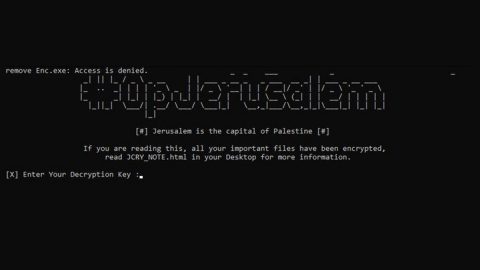What is CA$HOUT ransomware? And how does it work?

CA$HOUT ransomware is another file-encrypting threat developed by amateur cyber criminals. Thankfully, this ransomware is a badly developed one, so it is not as dangerous as some famous ransomware nowadays like Wannacry or Petya. This ransomware spreads using a malicious executable file named, WindowsApplication1.exe which could mean that the cyber criminals who created this infection used Visual Studio in developing it.
After it successfully infiltrated your computer, CA$HOUT ransomware opens a window illustrated above that contains the ransom note. As per the ransom note, this ransomware gives you options to choose from in paying the ransom and will ask you to provide your email address. According to our researchers, this ransomware does not seem capable of scanning your entire computer system thoroughly and luckily, can only detect files from certain folders.
How is CA$HOUT ransomware distributed?
This ransomware, like most ones are distributed through spam emails. The amateur cyber criminals sent out its malicious executable file which is WindowsApplication1.exe through spam emails. Most users are often tricked into opening the email since it may appear like some important email such as invoices, receipts and whatnot. So once you open and download the infected attachment, the CA$HOUT ransomwaren starts to scan your computer for certain files.
Moreover, this file-encrypting threat is also found to be distributed through Remote Desktop Protocol or RDP which could mean that your computer has a badly configured remote desktop program or your computer may have low quality password protection that made it easier for the threat to infect your computer system. That’s why it is important to set up a strong password and have a good and trusted antivirus like SpyRemover Pro to protect your computer from the hands of cyber criminals and to prevent ransomware like CA$HOUT from entering your computer system.
As stated, CA$HOUT ransomware is poorly developed. However, you should not take any chances and waste any time and look for the best and alternative solution to get rid of this ransomware. Thankfully, you’ve come to the right place. Below are the complete removal instructions. Follow them thoroughly for a successful ransomware removal.
Step 1: Open Windows Task Manager by pressing Ctrl + Shift + Esc at the same time.

Step 2: Go to the Processes tab and look for any suspicious processes and then kill them.

Step 3: Open Control Panel by pressing the Windows key + R, then type in appwiz.cpl and then click OK or press Enter.

Step 4: Look for CA$HOUT ransomware or any suspicious program and then Uninstall.

Step 5: Hold down Windows + E keys simultaneously to open File Explorer.
Step 6: Go to the directories listed below and delete everything in it. Or other directories you might have saved the file related to CA$HOUT ransomware.
- %USERPROFILE%\Downloads
- %USERPROFILE%\Desktop
- %TEMP%
Step 7: Look for the WindowsApplication1.exe or any suspicious files.
Step 8: Right-click on it and click Delete.
Step 9: Go to desktop and delete READ_IT.txt.
Step 10: Empty the Recycle Bin.
Step 11: Try to recover your encrypted files.
Restoring your encrypted files using Windows’ Previous Versions feature will only be effective if the CA$HOUT Ransomware hasn’t deleted the shadow copies of your files. But still, this is one of the best and free methods there is, so it’s definitely worth a shot.
To restore the encrypted file, right-click on it and select Properties, a new window will pop-up, then proceed to Previous Versions. It will load the file’s previous version before it was modified. After it loads, select any of the previous versions displayed on the list like the one in the illustration below. And then click the Restore button.

Follow the continued advanced steps below to ensure the removal of the CA$HOUT ransomware:
Perform a full system scan using SpyRemover Pro.
- Turn on your computer. If it’s already on, you have to reboot
- After that, the BIOS screen will be displayed, but if Windows pops up instead, reboot your computer and try again. Once you’re on the BIOS screen, repeat pressing F8, by doing so the Advanced Option shows up.
- To navigate the Advanced Option use the arrow keys and select Safe Mode with Networking then hit
- Windows will now load the Safe Mode with Networking.
- Press and hold both R key and Windows key.
- If done correctly, the Windows Run Box will show up.
- Type in explorer http://www.fixmypcfree.com/install/spyremoverpro
A single space must be in between explorer and http. Click OK.
- A dialog box will be displayed by Internet Explorer. Click Run to begin downloading SpyRemover Pro. Installation will start automatically once download is done.
- Click OK to launch SpyRemover Pro.
- Run SpyRemover Pro and perform a full system scan.
- After all the infections are identified, click REMOVE ALL.
- Register SpyRemover Pro to protect your computer from future threats.
















